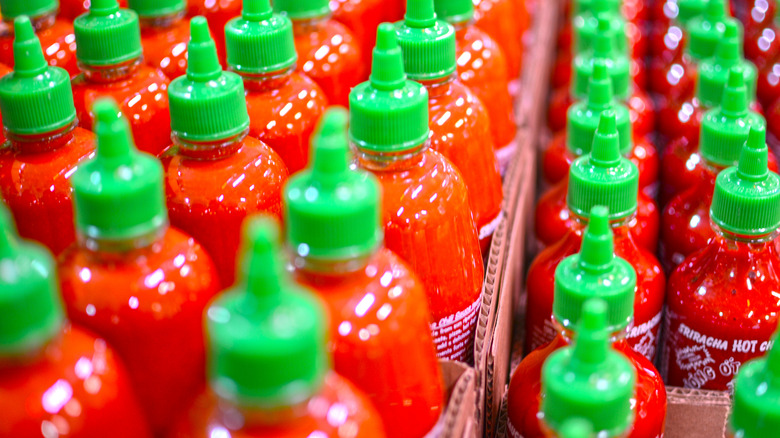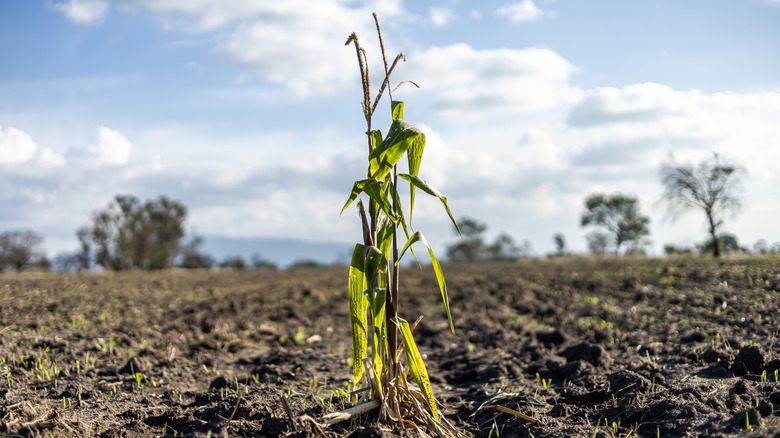The Ongoing Sriracha Shortage Is Causing An Exorbitant Price Surge
We may receive a commission on purchases made from links.
Would you pay $80 for a bottle of sriracha? Or would you start looking for sriracha alternatives? A shortage of the chilis used to make sriracha is causing a low supply of the famous — but common — hot sauce, creating a demand that's seeing prices soar. One seller on Amazon is selling two-packs of 28-ounce bottles for $159.99. Two other sellers are listing two-packs for just shy of $100. Buyers can still purchase similar products from other sriracha brands, like Bushwick Kitchen, Yellowbird, and Fix, for standard prices, but the leading brand, Huy Fong, is running dry.
This isn't the first year that has seen a shortage in sriracha. According to Huy Fong, there has been a chili shortage for the past three consecutive years, causing the company to stop production at one point in 2022. A spokesperson recently told CNN, "We continue to have a limited supply that continues to affect our production. At this time, we have no estimations of when supply will increase."
The company told the LA Times in April 2023 that it was still facing a shortage of raw material: sun-ripened red chili peppers. Huy Fong sources its 50,000 tons of peppers from farms in Mexico, whose harvests have been negatively affected by drought in recent years.
Climate change, water management, and crop shortages
Though farms have good years and bad years, it's apparent that the unprecedented shortage for multiple years in a row has been caused by massive droughts in the region. In 2022, the executive operations manager for Huy Fong, Donna Lam, attributed the shortage specifically to bad growing conditions in one region of Mexico. Water shortages in Mexico were so severe that homes in Monterrey were lucky to have tap water for a couple of hours per day; some told the LA Times they'd only had water once in two weeks, and just for a couple of hours.
The crisis was caused, in part, by violent protests from Chihuahuan farmers over a 1944 treaty that requires Mexico to send water from its Rio Grande tributaries to the U.S.; the Mexican government diverted water from elsewhere, causing shortages in Monterrey. It's more broadly caused by a diversion of water from the Colorado River to U.S. farms, meaning water never gets to Mexico in the first place.
Samuel Sandoval Solis, a water management expert from UC Davis, warned that this is the kind of shortage that Southern California, which relies on water from sources diverted upstream as well — much of it for water-thirsty agricultural crops — could be facing in the future. California is responsible for nearly half of the U.S.'s domestic fruits, nuts, and vegetables, and nearly a quarter of all imported U.S. agricultural products come from Mexico.

